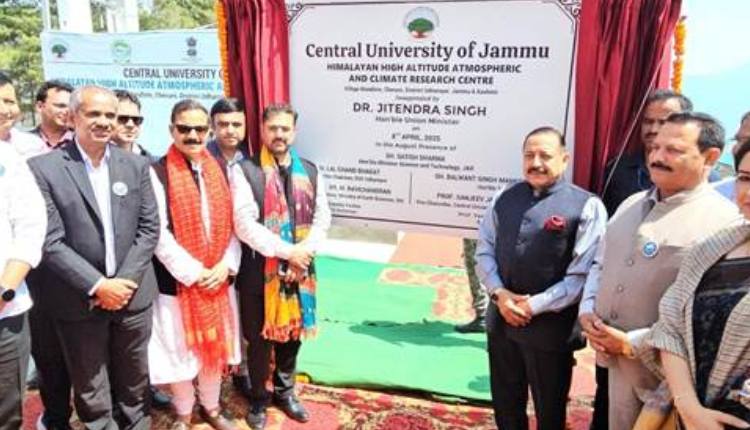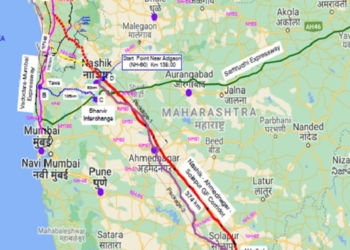Jammu: Union Minister of State (Independent Charge) for Science and Technology Jitendra Singh on Tuesday inaugurated the country’s first-ever high-altitude climate research station in Nathatop, in the Udhampur district of Jammu and Kashmir.
The state-of-the-art facility, situated at one of the highest altitudes in the region, is expected to serve as a crucial gateway for cutting-edge climate research in the northwestern Himalayas.
“Today India opens a gateway into climate forecast and research in the Himalayas,” Dr Singh said while inaugurating the Centre.
“This is a move that marks a significant milestone in India’s global leadership in climate science,” he said.
Dr Singh also flagged off the Indo-Swiss Joint Research Project “ICE-CRUNCH (Ice nucleating particles and cloud condensation nuclei properties in the North-Western Himalayas)”.
ICE-CRUNCH, a collaborative study between Indian scientists and researchers from ETH Zurich, Switzerland, is aimed at exploring the properties of ice nucleating particles and cloud condensation nuclei in the region.
Calling it a “historic moment,” Dr Singh said that the centre opens “up a new gateway into climate research and studies in the Himalayas. And India will be pioneering it.”
The Nathatop centre — located at an altitude of 2,250 meters above sea level — is a product of multi-tier collaboration between the Ministry of Science and Technology and the Jammu and Kashmir government, which provided the land.
Scientists from the Central University of Jammu will participate in research along with those from the Swiss National Science Foundation.
The site was strategically chosen for its clean air and minimal pollution, providing a rare opportunity to study atmospheric processes in free tropospheric conditions — a key requirement for understanding cloud formation, weather patterns, and aerosol interactions.
The Centre’s first set of measurements will be conducted under ICE-CRUNCH. The Indian and Swiss scientists will study ice-nucleating particles and cloud condensation nuclei.
These studies are crucial in understanding the role of aerosols in cloud microphysics and their broader implications on climate systems and precipitation in the Himalayan region.
Beyond scientific research, the Centre is also expected to contribute to capacity building, training of young scientists, and development of climate modelling capabilities in India, the Science and Technology Ministry said.
(IANS)
















